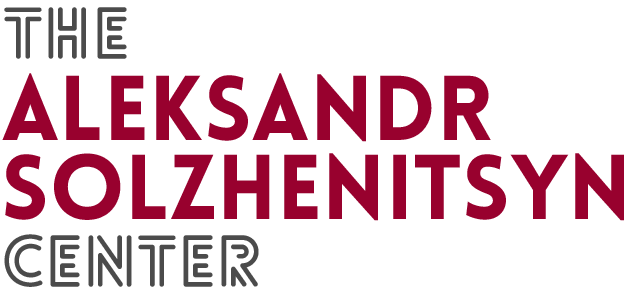Landmarks & Exhibits
Several small museums, exhibits, and landmarks have been developed to celebrate the life and works of Solzhenitsyn, especially in the last decade. Many are clustered in Russia in both Moscow and the towns he spent in exile and persecution. Below is a shortlist of some of these notable sites that can be visited today.
Solzhenitsyn Museum, Kislovodsk
Established: May 2015
Location: Kislovodsk
Solzhenitsyn’s birthplace, Kislovodsk, is a spa town on the north slope of the Caucasus Mountains, and near the steppes (prairies) of southern Russia. Solzhenitsyn’s grandparents farmed in this region. Although the home where he was born and the church where he was baptised were both destroyed, the home that once belonged to his aunt, Maria Gorina, and where he lived as a toddler, remains. It has undergone comprehensive restoration and is now the site of the Solzhenitsyn Museum in Kislovodsk.
Matryona’s Home - Reconstructed
Established: October 2013
Location: Mezinovsky (Torfoproduct), Gus-Crystal rayon, Vladimir oblast
For less than one brief year, in 1956-57, Solzhenitsyn boarded with Matryona Zakharova, while teaching at at the village school about a mile away. The local economy was based on peat harvesting and small-scale farming. Readers of the story already know what happened to part of Matryona’s home, while the remainder would later burn down in a fire. Now, an exact replica has been reconstructed adjacent to the school, and the school itself bears Solzhenitsyn’s name.
Related Resources
▹ "Monument to Alexander Solzhenitsyn Is Set in the Village Mezinovka"
tvkultura.ru, 28/10/13
▹ "Возле школы вырос Матренин двор"
prizyv.ru, 31/10/13
▹ "In Mezinovskom opened Matryona and the monument to Alexander Solzhenitsyn"
start33.ru, 28/10/13
Belgorod Monument
Established: October 2013
Location: Mezinovsky Gus Crystal, Russia
A monument dedicated to Solzhenitsyn was unveiled on Belgorod State University's 137th anniversary on the Avenue of Nobel Winners. It depicts the writer sitting on a stool, wearing boots similar to those that he would have worn during his time in the gulag, holding a book in his hands.
Related Resources
▹ "A Monument to Solzhenitsyn Unveiled to Solzhenitsyn"
Lenta.ru, 27/9/2013
Ulitsa Solzhenitsyna or "Solzhenitsyn Street"
Established: 12 August 2008
Location: Moscow
Shortly after Solzhenitsyn's death in August 2008, President Dmitri A. Medvedev decreed the renaming of a Moscow street in Solzhenitsyn's honor. Mayor Yury Luzhkov selected Bolshaya Kommunisticheskaya Ulitsa, or Big Communist Street, which runs close to the site of the first staging of one of Solzhenitsyn's works, Taganka Theater. The well known thoroughfare features some of the city's best preserved pre-revolutionary residences.
Related Resources
▹ "Honor a Literary Giant, But Be Careful Where"
nytimes.com, 26/9/2008
▹ View in Google Maps
House of Russian Culture Abroad
Established: 1995
Location: Moscow
Once exiled, Solzhenitsyn realized he had the opportunity to preserve the memoirs and other archival riches of Russia’s post-Revolution and post-World War II diaspora. He asked Russians living abroad to write down their stories, no matter their station in life, and that he would one day bring their memories back to a free Russia. And he fulfilled that promise upon his return.
Related Resources
▹ House of Russian Culture Abroad Web Site
Vendée Memorial
Established: 25 September 1993
Location: Les Lucs-sur-Boulogne, France
It is estimated that over 200,000 civilians lost their lives at the hands of the Republican armies during a Royalist rebellion in France's Vendée region from 1793-1796. Some historians consider it the first modern-day genocide. The opening of the memorial in 1993 was well attended (though poorly covered by the media); Solzhenitsyn gave the dedication.
Related Resources
▹ Solzhenitsyn's Dedication of the Vendee Memorial (PDF)
Cavendish, Vermont Exhibits
Cavendish Historical Society Solzhenitsyn Project - "I Wrote and Waited"
The Cavendish Historical Society's primary focus is on those years Solzhenitsyn lived in Cavendish 1976-1994. To that end, the group is planning a permanent home for a Solzhenitsyn exhibit at the Cavendish Stone Church. This is the second oldest building in town (1844). As this building is undergoing major restoration, there is an exhibit at the CHS Museum (1958 Main St. Cavendish). Museum hours are every Sunday from 2PM-4PM, from Memorial Day to Columbus Day weekends. However, other times can be arranged for visitation. CHS also maintains archives and continues to gather information and materials dating to the period of time Solzhenitsyn was a resident in Cavendish. The third part of CHS's activities is outreach and as such provides speakers and information to schools, libraries, community groups and visitors from around the world. For more information call 802-226-7807, or email Margo Caulfield at margocaulfield@icloud.com
Ryazan Landmarks
During his decade long exile in Ryazan, Solzhenitsyn taught astronomy and physics for several years at School No. 2. A plaque commemorating his time there can be seen posted outside of the school located on 7 Sobornaya Ulitsa. He lived just over 2 km away with his first wife, Natalya Reshetnikova, in an apartment located at 17 Ulitsa Uritskogo before moving to a larger apartment at what is now 1 Ulitsa Yablochkova. Solzhenitsyn wrote parts of The Gulag Archipelago in Ryazan as well; he rented a secret apartment where he wrote in hopes of evading the KGB. It has since been torn down. A museum dedicated to the writer is slated to open in 2017.
Related Resources
▹ View School in Google Maps
▹ "Solzhenitsyn Museum in Ryazan to Be Ready by 2017"
russkiymir.ru, 23/7/14








